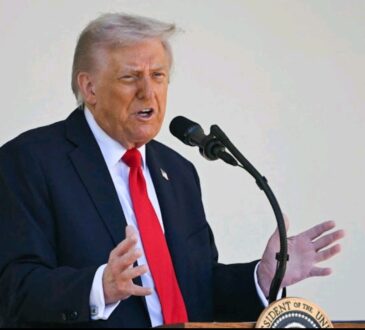Thousands of federal workers forced to return to office make horrifying discoveries after Trump ended working from home

The Trump administration’s sweeping mandate forcing federal employees back to the office has unleashed bureaucratic chaos across government agencies, revealing a perfect storm of neglected infrastructure, haphazard planning, and what many believe is a deliberate strategy to thin the ranks of civil servants.
As thousands of workers stream back into government buildings after years of remote work, they’re encountering scenes straight out of a dystopian workplace satire – offices that appear frozen in March 2020, complete with expired post-it notes and half-empty coffee cups left behind during the pandemic’s abrupt shift to remote work, now sharing space with rodent infestations and malfunctioning facilities.
At the IRS, employees report a bizarre game of musical chairs with workspaces, where the lucky ones secured actual desks while others were shunted into repurposed classrooms or auditoriums. Some found themselves assigned to secure areas they couldn’t even access, creating a surreal situation where workers are technically “in the office” but have nowhere to actually work.
The FAA’s headquarters has become a case study in poor planning, with returning staff facing hour-long cafeteria lines and bathroom shortages reminiscent of a crowded stadium rather than a government workplace
. One employee described the indignity of hunting through multiple floors to find basic supplies like paper towels, while others have resorted to working in hallways.
The physical decay of government buildings tells its own story. At multiple agencies, workers returned to find restrooms with permanently clogged toilets, kitchens with broken appliances that hadn’t been repaired in years, and conference rooms that had been overtaken by colonies of cockroaches during the empty pandemic years.
The Smithsonian Institution’s administrative offices reportedly had entire wings where the air conditioning hadn’t functioned since 2019, creating sweltering work environments in the early spring heat.
EPA employees in a Chicago federal building discovered their office mice had gone feral during the absence, with one worker joking they’d “unionized” after finding nests made of shredded government documents.
Behind the scenes, federal employee unions are fuming at what they see as a manufactured crisis. They point to the administration’s refusal to implement a phased return or allocate proper resources for facility upgrades as evidence this is less about workplace efficiency and more about forcing attrition.
The numbers support their suspicions – nearly 30,000 federal workers were laid off in the weeks leading up to the return deadline, with DOGE head Elon Musk boasting about achieving “private sector discipline” in government.
Leaked internal memos show some agencies were instructed to prepare for up to 20% of their workforce not returning after the mandate, suggesting the chaotic conditions may be a feature rather than a bug of the new policy.
The human toll is becoming increasingly apparent. Longtime civil servants who successfully worked remotely for four years now face impossible choices – enduring hours-long commutes to sit in substandard workspaces, attempting to secure medical exemptions (which agencies have been quietly rejecting at high rates), or leaving government service altogether.
At the Department of Agriculture, one mid-level manager described the absurdity of her team being forced to commute to an office only to spend all day on Zoom calls with colleagues in other locations – the very practice the return-to-office order was meant to eliminate.
White House officials continue to frame the policy as a necessary return to normalcy, but the reality on the ground suggests anything but normal working conditions.
As the administration pushes forward with its government streamlining agenda, the scenes of disarray in federal offices serve as a stark reminder of the human cost of political decisions and raise serious questions about whether the federal government can maintain its operations amid what many employees describe as an intentional campaign to make their jobs unbearable.




